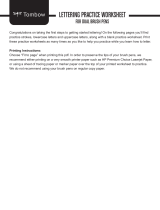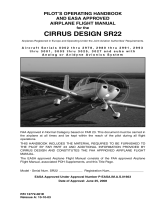
TABLE OF CONTENTS
i
190-00334-03 Rev. A
GNS 430W/530W Sample Training Syllabus and Flight Lessons
1 INTRODUCTION ............................................................................................................................................................1-1
1.1 Overview .................................................................................................................................................................1-1
2 HOME STUDY WORKSHEETS ......................................................................................................................................2-1
Objective .................................................................................................................................................................2-1
Elements ..................................................................................................................................................................2-1
Schedule ..................................................................................................................................................................2-1
Equipment ...............................................................................................................................................................2-1
Student Actions .........................................................................................................................................................2-1
Completion Standards .................................................................................................................................................2-1
2.1 GNS 430W/530W Home Study 1 ................................................................................................................................2-2
Worksheet – Use of GPS in lieu of other avionics, regulations ................................................................................................2-2
2.2 GNS 430W/530W Home Study 2 ................................................................................................................................2-3
Worksheet – Terminology Review ...................................................................................................................................2-3
2.3 GNS 430W/530W Home Study 3 ................................................................................................................................2-4
Worksheet – WAAS Review ..........................................................................................................................................2-4
2.4 GNS 430W/530W Home Study 4 ................................................................................................................................2-5
Worksheet – COM and VLOC Operation ...........................................................................................................................2-5
2.5 GNS 430W/530W Home Study 5 ................................................................................................................................2-6
Worksheet – Direct-to and Flight Plan Navigation ...............................................................................................................2-6
2.6 GNS 430W/530W Home Study 6 ................................................................................................................................2-7
Worksheet – Arrival, Departure, and Approach Procedure Operation ........................................................................................2-7
2.7 GNS 430W/530W Home Study 7 ................................................................................................................................2-9
Worksheet – GNS 430W/530W Series Display Interfaces; TIS .................................................................................................2-9
2.8 GNS 430W/530W Home Study 8 ................................................................................................................................2-10
Worksheet – GNS 430W/530W Series Display Interfaces; GDL 69 Weather ................................................................................2-10
2.9 GNS 430W/530W Home Study 9 ................................................................................................................................2-11
The Role of Avionics in Aeronautical Decision Making and Single-Pilot Resource Management ........................................................2-11
3 GNS 430W/530W FLIGHT ORIENTATION ..................................................................................................................3-1
Objective ................................................................................................................................................................3-1
Elements .................................................................................................................................................................3-1
Schedule ..................................................................................................................................................................3-1
Equipment ...............................................................................................................................................................3-1
Student’s Actions .......................................................................................................................................................3-1
Completion standards .................................................................................................................................................3-1
3.1 Lesson 1: GNS 430W/530W Introduction - Cross-Country Flight .................................................................................3-2
3.2 Lesson 2: Local Operational Flight Review ...............................................................................................................3-3
3.3 Lesson 3: GNS 430W/530W Dual Installation Introduction .........................................................................................3-4
3.4 Lesson 4: Dual Installation MFD Operations .............................................................................................................3-6





















